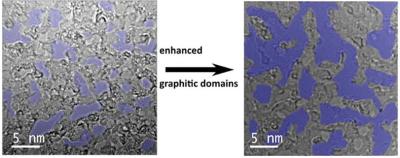A team of researchers at UNSW has observed a unique phenomenon in graphene oxide (GO). The oxygen atoms in GO are normally attached in a rather chaotic way. At elevated temperatures, however, the oxygen atoms form more organized structures by themselves. This process of ‘self-organization’ was found to drastically improve various properties of GO for example, its electrical conductivity.

For years, researchers have been aware that this phenomenon existed, but they could only demonstrate it using computational simulations. The new research, led by Dr. Rakesh Joshi at UNSW, successfully observed it for the first time in real life, using cutting-edge electron microscopy. While common microscopes use light to create a magnified image, electron microscopes use electrons. With this type of microscope, it is possible to observe single atoms, by magnifying what you’re looking at by a factor of 1,000,000.
I was immediately fascinated. Reading more, I noticed a significant amount of research was using this phenomenon to fine-tune the properties of GO for a wide range of possible applications. But none of these studies showed a direct observation of the mechanism they assumed it was driving these enhancements, but didn’t actually demonstrate it. Foller decided to start looking into the issue more closely.
While the first promising results began to form, Priyank Kumar the first author on the MIT paper joined UNSW as a Scientia Lecturer in Engineering, at just the right time to help see the experimental discovery take place.
I was thrilled to see the first results that could finally give direct evidence to our previous work, Dr. Kumar, who also collaborated on the study published this month, says.
Now that we understand this mechanism, and have seen how it actually plays out in real life, we can control the properties of GO more precisely, says Dr. Joshi.
This all adds up to a key finding that gives us a deeper understanding of the properties of GO and it might play a key role in bringing it a step closer to real-world applications such as sustainable water filtration, hydrogen generation and many more, Dr. Joshi says.
Rgo
Sadly this technology will be used
Oh wait ...is being used in the "vaccines"
Hoax from anon
Prove it! Besides the hoax in Spanish University?
You're absolutely right it is
You're absolutely right it is, and they wonder why the hesitancy. Smh